"Panchito! Panchito!" Franco urged in hushed tones. "Venga, venga, venga!" He whistled quietly, scanning the edges of the clearing. There was no response. "Venga, venga, venga!" he whispered again, more insistently this time. In the half-light of this dense forest there seemed to be little activity, but all of a sudden something flitted in the shadows. I peered into the understorey and made out the silhouette of a bird standing upright and dead still. Then, seizing the moment, it hopped into the open, revealing a black head with striking white cheek patches and throat, brown upperparts and grey below: Jocotoco Antpitta!
We gasped in unison as this mythical inhabitant of humid Andean forest not only broke cover but continued to bound towards Franco, seized a worm he had placed on the ground, and swallowed it. The views were as close as the experience was surreal, and without batting an eyelid in the direction of its human admirers just feet away, this globally rare bird set about consuming its breakfast right in front of us.
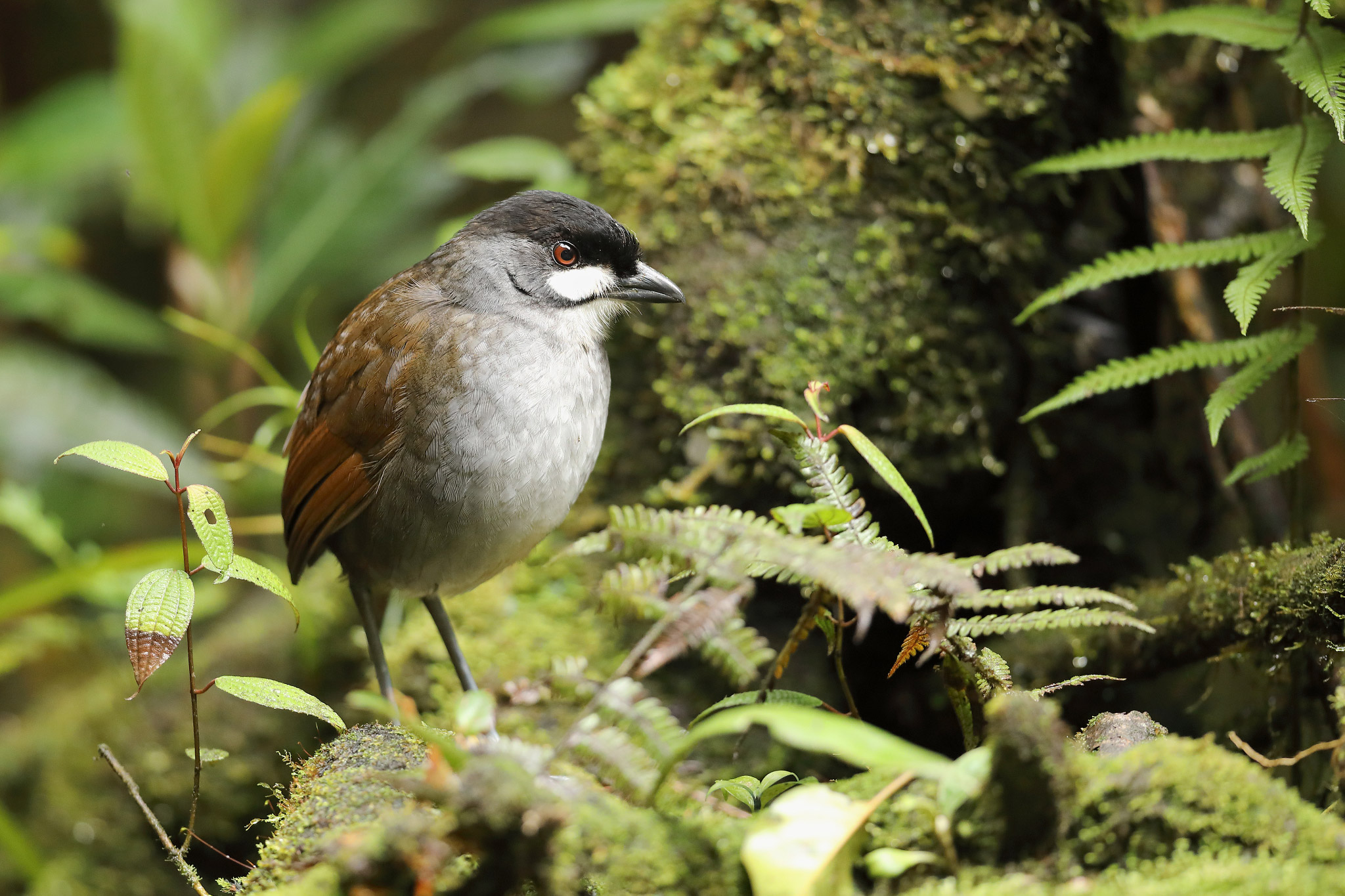
Jocotoco Antpitta was discovered as recently as 1997, illustrating how important it is to preserve remaining habitats where similar surprises may still hide (Dominic Mitchell).
Barely 20 years ago, this antpitta was unknown to science. An expedition by Bob Ridgely and others in November 1997, organised mainly to obtain sound recordings, heard an unfamiliar soft hooting call. Playback of a second calling individual induced the vocalist into the open, revealing it to be a totally unknown species. Two months later another expedition captured and photographed the first live specimen, and among that team was Neblina Forest's Xavier Muñoz, our guide on this trip.
As our new-found feathered friend retreated back into the undergrowth, Xavier recounted that momentous discovery. "We knew it was a new species. We sent the DNA and tissue to the Philadelphia Museum, and after that we realised we needed to protect this land. We had to create our own foundation ... primarily to buy land to protect specific, endangered birds and specific habitats throughout the country." And so it was that a chance encounter led to the discovery of "possibly the most spectacular of all the antpittas", as fellow expedition member David Brewer put it, and the creation of Fundación Jocotoco. This fledgling NGO started with out with 700 hectares but now works to conserve endangered species and habitats across its 12 reserves around the country.
Despite protection of its immediate surroundings, the entire population of Jocotoco Antpitta is estimated to be as low as 150-700 individuals, and it is known from just five locations. The chance to see such a rare, newly discovered species is an important reason for birders to visit this southernmost corner of Ecuador, but by no means the only one. As we birded our way back to the lodge at Tapichalaca Reserve, which boasts no fewer than 13 bird species classified as globally threatened or near-threatened among more than 300 recorded in the area, it was a mammal that stole the show – near-panic erupted when a Mountain Tapir gave brief but excellent views as it passed through a roadside gully.
Moving on
Much farther north along the Andes, on the western slopes of the Antisana volcano, lies another key Fundación Jocotoco reserve. At 11,600 feet above sea level, the air at Antisanilla feels pretty thin. Starting our visit by sprinting was definitely not one of my best ideas, but impulse kicked in on news of another sought-after mammal currently on view. I hurtled out of the van towards the lodge where the guides were shouting, and put my eye straight to a waiting scope. I needn't have rushed – taking its time on a steep slope on the far side of the valley, a young Spectacled Bear ambled through the tussocks, pausing to sniff shrubby clumps of vegetation, occasionally dismembering and consuming the softer parts of a bromeliad before continuing on its way.
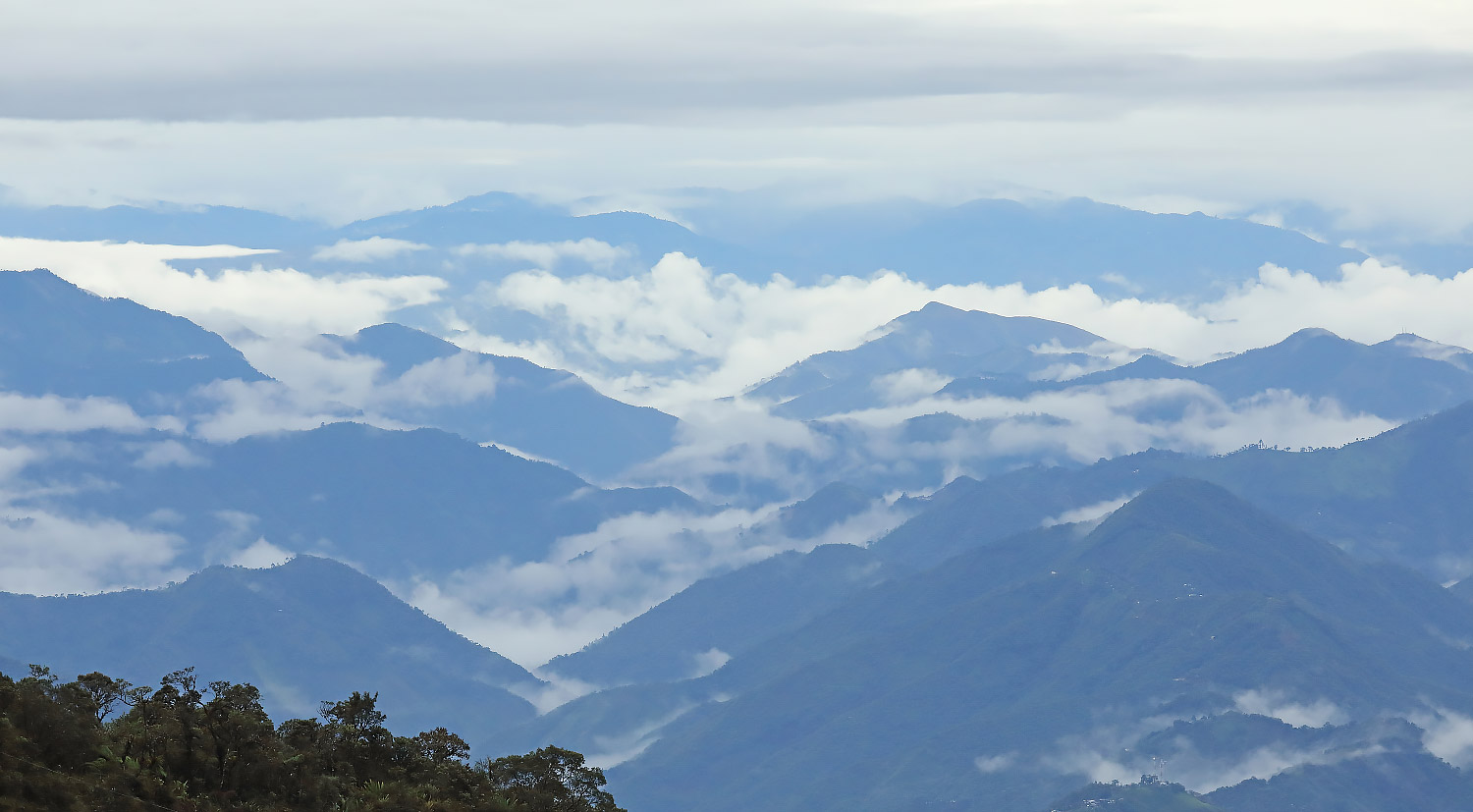
High-altitude localities in the Ecuadorian Andes brought sightings of Spectacled Bear and Andean Condor, as well as epic vistas (Dominic Mitchell).
I was breathless in every sense, having fulfilled a long-held ambition to see this amazing animal. That would have been enough on its own, but we had barely got started at this impressive reserve. Giant Hummingbirds dwarfed their congeners around the feeders, while Paramo Pipits performed on the grassy slopes as we walked towards the valley. A Black-chested Buzzard-Eagle took to the wing but couldn't compete with the spectacular Andean Condors – a nationally endangered bird in Ecuador – that drifted above us. Below a spectacular lakeside viewpoint, numerous Andean Gulls patrolled back and forth while gaggles of Yellow-billed Pintail and Andean Teal sifted the shallows.
From here we continued to higher ground, successfully locating the diminutive Ecuadorian Hillstar on its favoured Flower of the Andes shrub, as well as the more flamboyant Black-tailed Trainbearer. More upland birds such as Stout-billed Cinclodes, Tawny Antpitta, Black-billed Shrike-Tyrant and Plumbeous Sierra-Finch followed, while a nearby plateau produced Aplomado Falcon, large numbers of Carunculated Caracaras and the locally very rare Black-faced Ibis, here at the northernmost limit of its South American range.
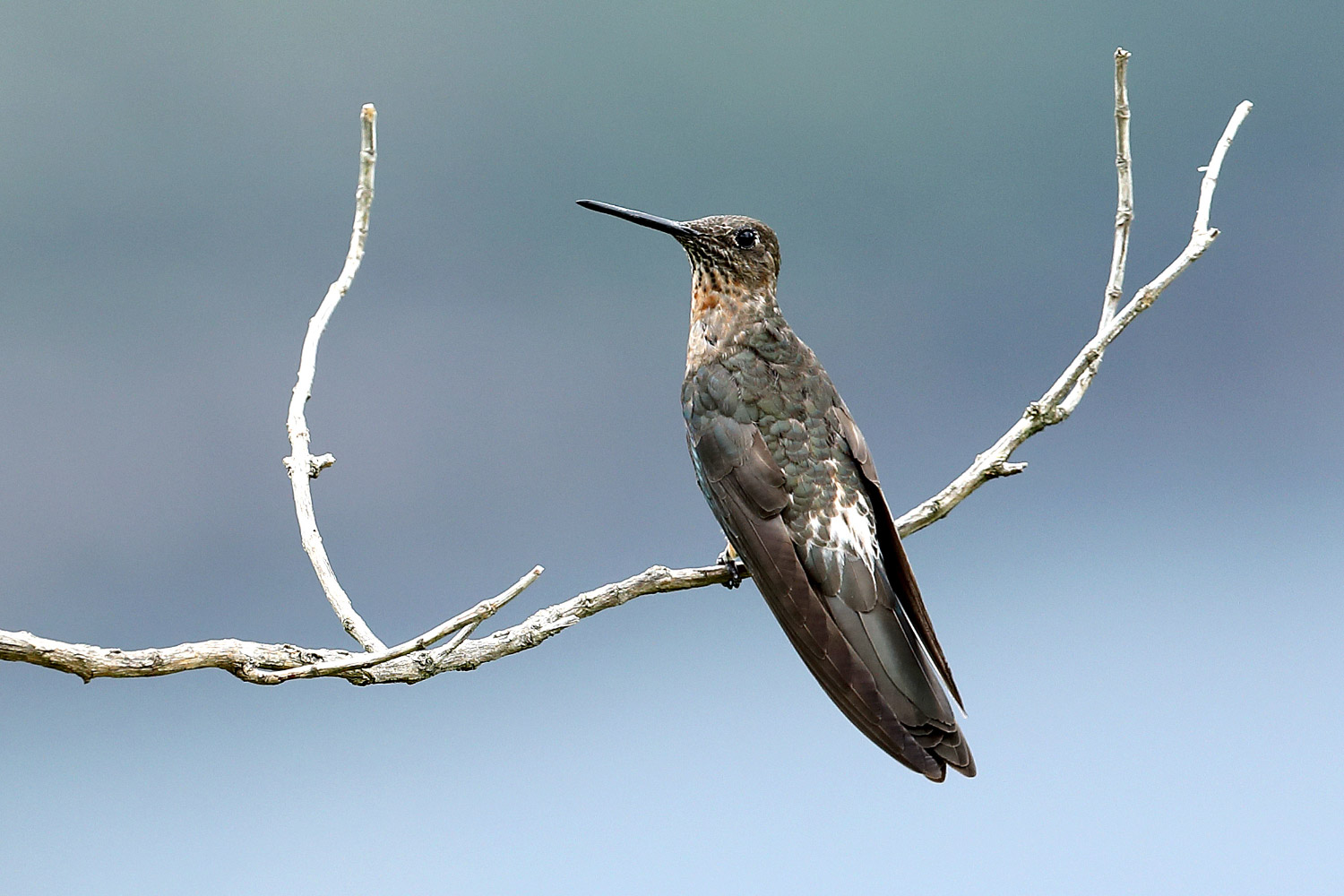
Giant Hummingbird is, as its name suggests, the largest member of its family (Dominc Mitchell).
Birds and people
A different range of birds can be found at Yanacocha, another high-altitude reserve perched on the side of the Pichincha volcano near Quito. Shrouded in cloud during our visit, its bushes and feeders nonetheless held a surprising diversity of birds. As the weather closed in, a procession of Scarlet-bellied and Black-chested Mountain-Tanagers, Yellow-breasted Brushfinches and both Glossy and Masked Flowerpiercers raided the feeders, while hummingbirds included both Viridian and Tyrian Metaltails, Great Sapphirewing and Buff-winged Starfrontlet. With luck Black-breasted Puffleg, a Critically Endangered endemic, can also be found here.
It was good to see that many local people had also made the trip up to Yanacocha, and standing in the rain next to us were families from the Quito area, admiring the hummingbirds without any optics. I trained my scope on the mountain-tanagers and showed them to a youngster no more than 10 years old, who was as mesmerised as I was by their plumage.
At the reserve centre we met with Fundación Jocotoco's Conservation Director, Michaël Moens, who underlined the growing importance of working with local communities as part of a wider conservation strategy. This is especially the case as some of the foundation's reserves – despite their protected designations – face threats from mining concessions. Protecting watersheds in the Andes from contamination is critical not only to ecosystems, but also to the communities that depend on clean water. "Water is going to be more and more important here in future," Michael emphasised. Other threats include deforestation, hunting and illegal trade, notably in parrots – Fundación Jocotoco clearly has its work cut out.
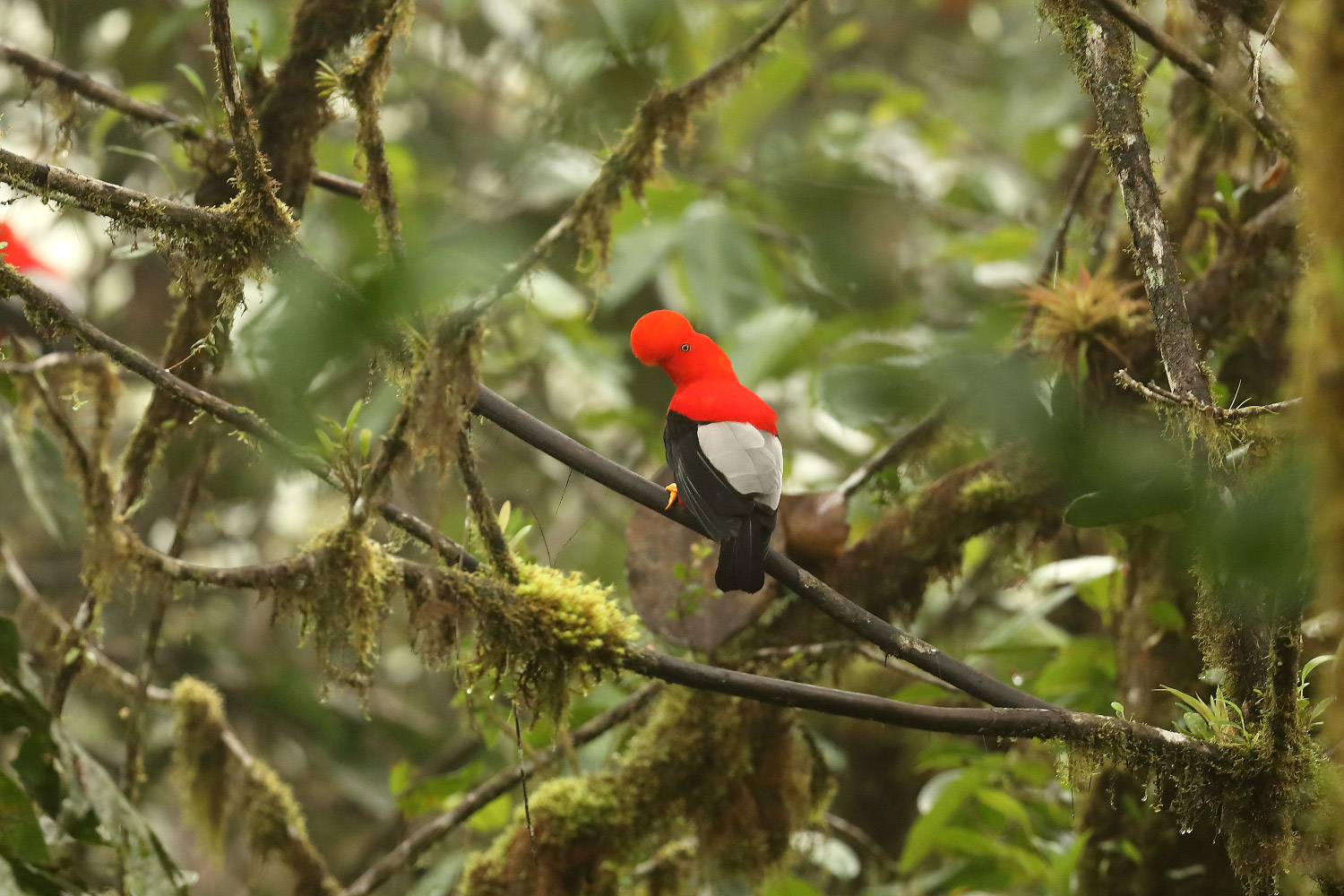
Visiting an Andean Cock-of-the-Rock lek offers one of the most distinctive and iconic experiences of the Andes (Dominic Mitchell).
From Yanacocha we descended towards Quito then north-westwards to famed Mindo, for many the epicentre of birding in north-western Ecuador. New birds and experiences came thick and fast, from Andean Cock-of-the-Rock leks and Cloud-forest Pygmy-Owl at dawn to more close-up antpittas – this time Moustached, Chestnut-crowned and Ochre-breasted – at the Refugio Paz de las Aves, as well as some first-rate birding at a specially designed property where the opportunities to see and photograph skulking, subtle forest species such as tapaculos, barbtails and treehunters, as well as gaudy tanagers and yet more hummers. In particular, I will never forget the experience of being eye-to-eye here with the near-endemic Plate-billed Mountain-Toucan.
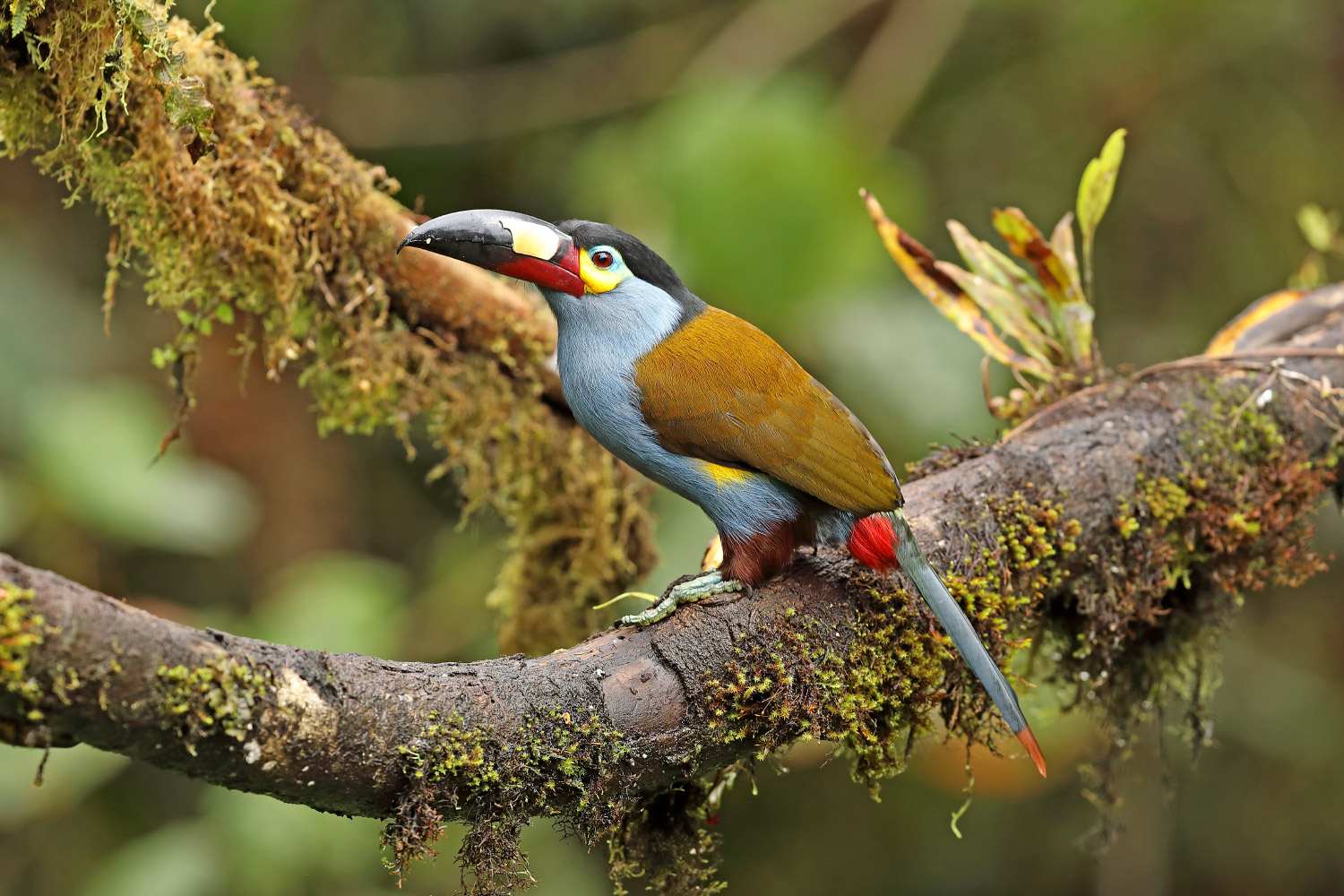
Plate-billed Mountain-Toucan is another of the Ecuadorian Andes' more spectacular birds (Dominic Mitchell).
Last call
Our time in Ecuador was drawing to a close, but we had one final location to visit before returning to Quito and, ultimately, home. Bellavista Lodge and Nature Reserve stands on a forested hilltop in Tandayapa Valley, its centrepiece being an elevated dome structure with eye-level views into the canopy. It was the vision of British backpacker Richard Parsons, who arrived in Ecuador in the early Eighties, fell in love with the country and never left. "Some of this land was just cattle pasture when we arrived," he told us. "It's amazing how quickly the forest comes back."
We could see the evidence. Three decades on, secondary growth around the lodge is well established and blends in seamlessly with the surrounding tracts of primary forest. A pair of Toucan Barbets, a species endemic to the Choco region of north-west Ecuador and adjacent south-west Colombia, greeted our arrival with their ‘tonking' duets, while Booted Racket-tails, Buff-tailed Coronets and other hummingbirds swarmed around the feeders.
At night, a shout of "Olinguito!" saw the restaurant empty in seconds as this rare and little-known mammal, described as recently as 2013, climbed a tree outside to feast on bananas. Bellavista is the best place to see this nocturnal oddity, and yet another reason to visit Ecuador. "No country packs so much biodiversity into such a small area," Richard reminded us. This had been clear since we first arrived, with exceptional birds and mammals from start to finish, and an important, growing network of reserves and conservationists to conserve it for the future.
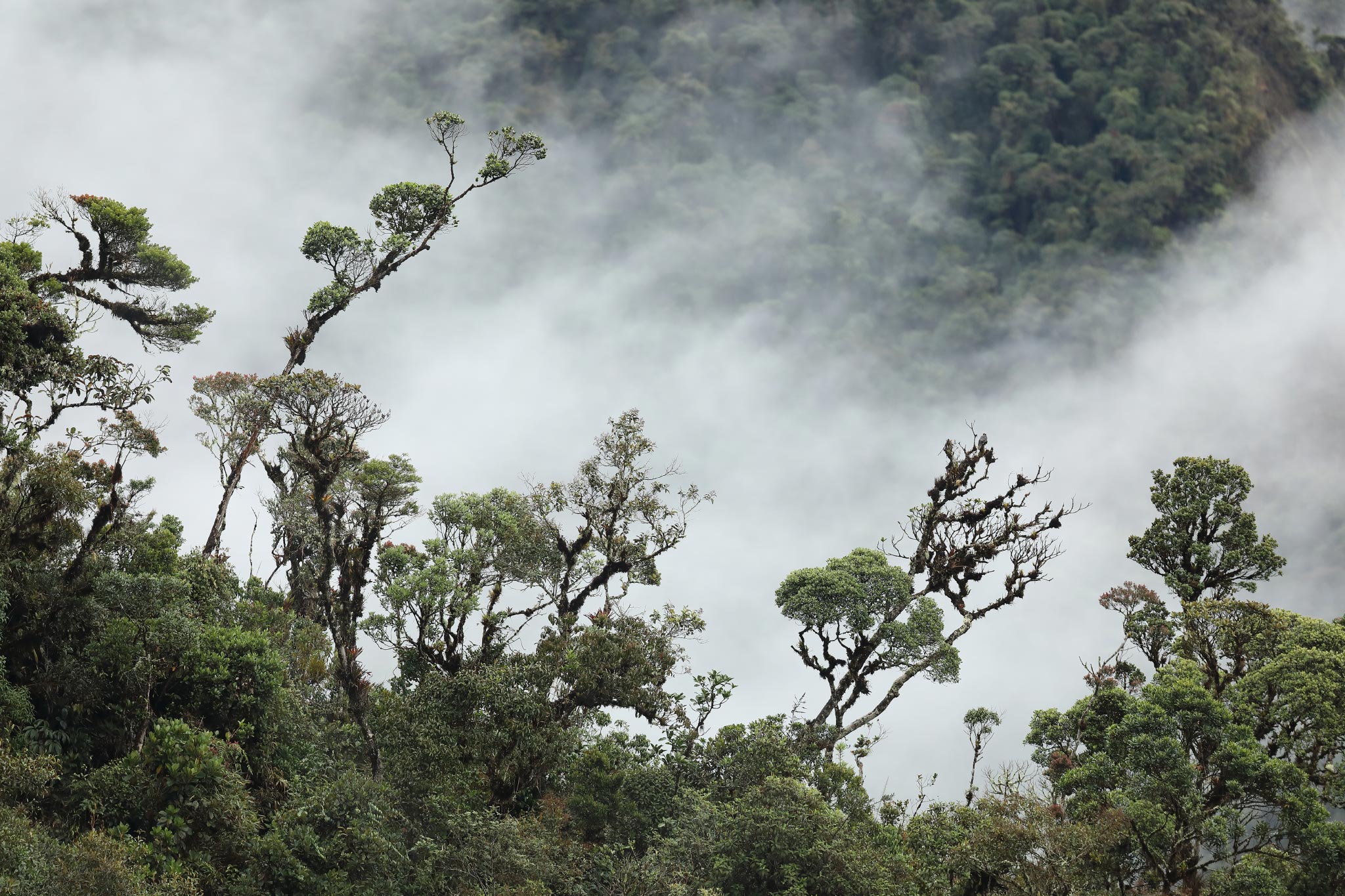
Ecuador's cloudforest is among the most biodiverse ecosystems on the planet (Dominic Mitchell).
No comments:
Post a Comment